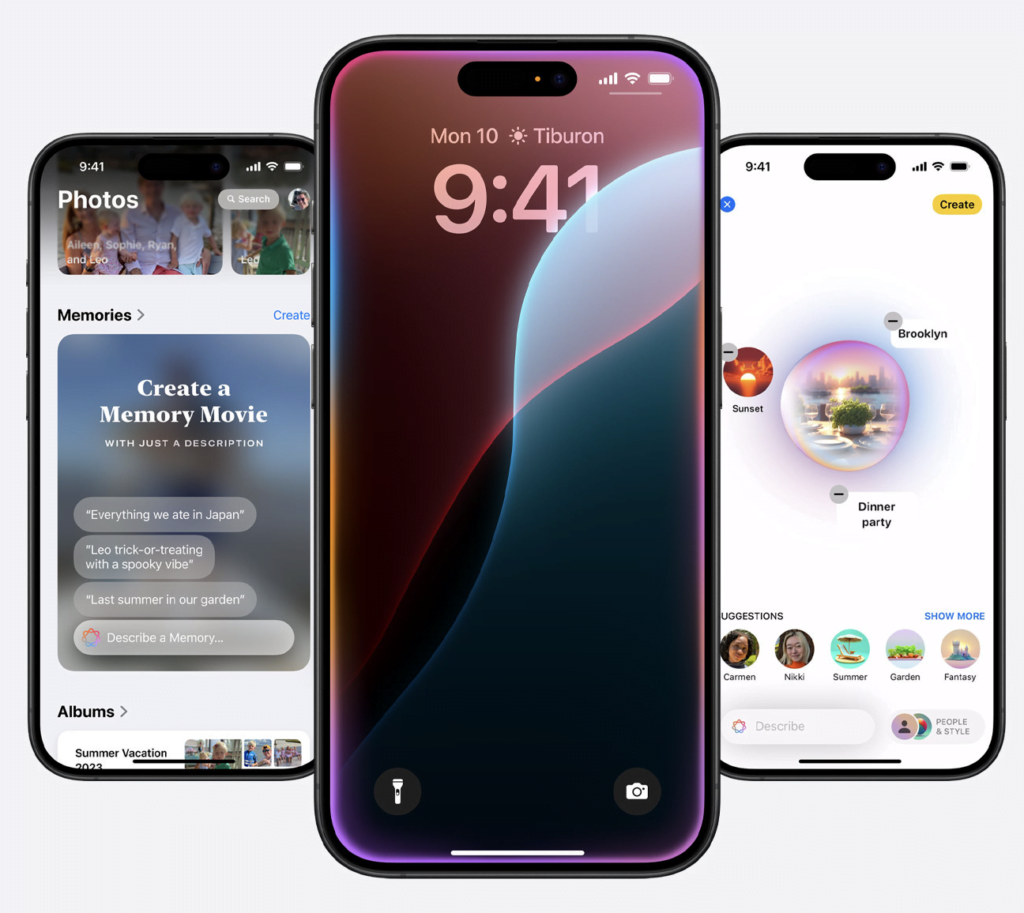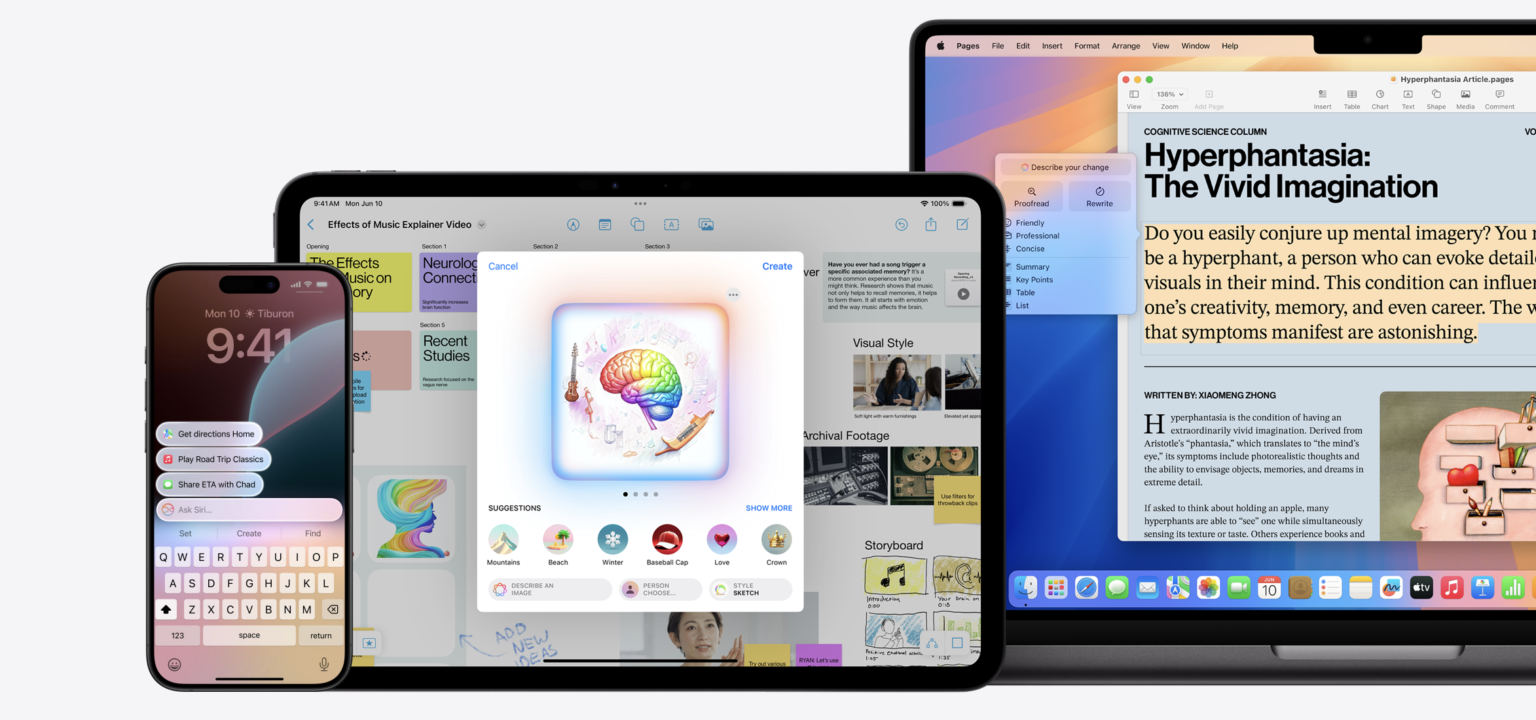In June, Apple Intelligence took center stage at WWDC 2024 (Apple Worldwide Developers Conference), following a wave of generative AI developments from tech giants like Google and OpenAI. This news initially met with concerns that Apple had fallen behind.
Editor’s Tip: Microsoft launches AI Designer app for iOS and Android
It became apparent that the company had been silently but diligently working behind the scenes, on what proved to be a very Apple approach to artificial intelligence.
New Era for Siri
A significant upgrade comes to Siri, Apple’s smart assistant, which now integrates more deeply across apps and provides a more intuitive user experience. With a completely redesigned interface, enhanced language comprehension, and the convenience of typing to Siri, communication is more intuitive than ever. For example, when activated, the familiar icon is replaced by a subtle, glowing ring around the edge of the iPhone screen, indicating that Siri is working.
Siri now seamlessly integrates with various apps, enabling users to interact with the assistant across different applications. Users can now seamlessly navigate through tasks, such as editing photos and embedding them in text messages. Siri has extensive knowledge of your device’s features and settings, making assistance more effective and personalized.
What is Apple Intelligence?
Apple Intelligence, referred to as AI, the technology, powered by large language models (LLMs), will operate behind the scenes to enhance existing apps with new features.
AI manifests in various forms. Writing Tools powered by LLM offer text summarization, proofreading, and message composition in apps like Mail, Messages, and Pages. This innovative tool enables users to streamline their writing tasks, offering capabilities like summarizing lengthy text, proofreading, and even composing messages on their behalf. Image generation features like Genmojis allow users to create custom emojis and visual content seamlessly. Image Playground can be used to improve Messages, Keynote presentations or shared on social media platforms.
Apple Intelligence: “AI for the rest of us.” The platform is built to capitalize on the strengths of generative AI, particularly in text and image creation and to enhance existing functionalities. It will help you write, express yourself, and get things done effortlessly. Like other platforms, such as ChatGPT and Google Gemini, Apple Intelligence was trained on huge amounts of data using deep learning techniques. This enables the system to forge connections between diverse forms of media, including text, images, video, and music.

Editor’s Tip: OpenAI GPT-4o mini – new cheaper AI model
ChatGPT Seamlessly Integrated
With OpenAI’s ChatGPT now integrated into Siri and Writing Tools, you can access enhanced expertise without switching between apps. Siri can utilize ChatGPT for specific tasks, such as inquiries about photos or documents. For example, the Compose feature in Writing Tools allows you to create and illustrate original content from scratch. With enhanced language capabilities, you can summarize an entire lecture in seconds or minimize unnecessary distractions with prioritized notifications.
You have a full control over ChatGPT when is used, with prompts for your consent before any information is shared. ChatGPT is freely accessible to everyone without creating an account, while subscribers can connect their accounts to access premium features.
Who Gets Apple Intelligence?
We have to wait until fall to get our hands on a beta version. At this time the releases of iOS/iPad OS 18 and Mac Sequoia are expected to be available on the App Store. Access to Apple Intelligence will be offered for free on select Apple devices:
Only the Pro models of the iPhone 15 will be eligible for Apple Intelligence due to the standard model’s limited processing capabilities.
Nevertheless, it’s likely that the entire iPhone 16 series will be compatible with Apple Intelligence.
Private Cloud Compute: Enhancing AI Capabilities
Apple has adopted a targeted approach to data training. The company has created custom datasets in-house for specific tasks, such as composing an email, which enables them to optimize these tasks for on-device processing. This approach allows for significant reductions in resource intensity, making it possible to perform these tasks locally.
This approach may work for easier tasks, but with new groundbreaking Private Cloud Compute, Apple Intelligence can draw on larger server-based models. Running on Apple silicon, to handle more complex requests for you while protecting your privacy.
Conclusion
Apple Intelligence is the personal intelligence system that puts powerful generative models right at the core of your iPhone, iPad, and Mac and powers incredible new features to help users work, communicate and express themselves. Designed to protect your privacy at every step. It’s integrated into the core of your iPhone, iPad and Mac through on-device processing. So it’s aware of your personal information without collecting your personal information. The user experience will be seamless, with actions executed either locally or remotely without distinction. Unless the device is offline, in which case any remote queries will result in an error message.


